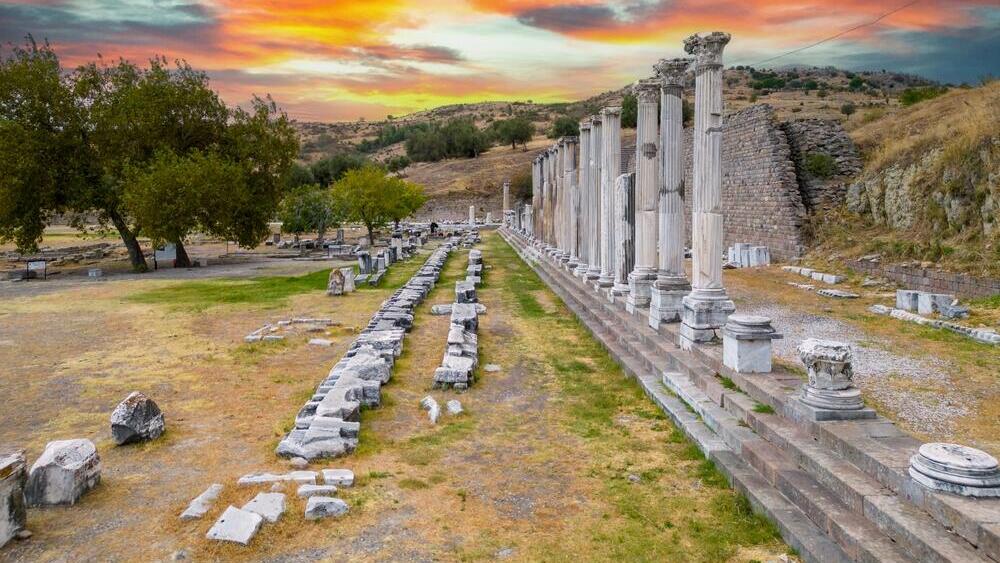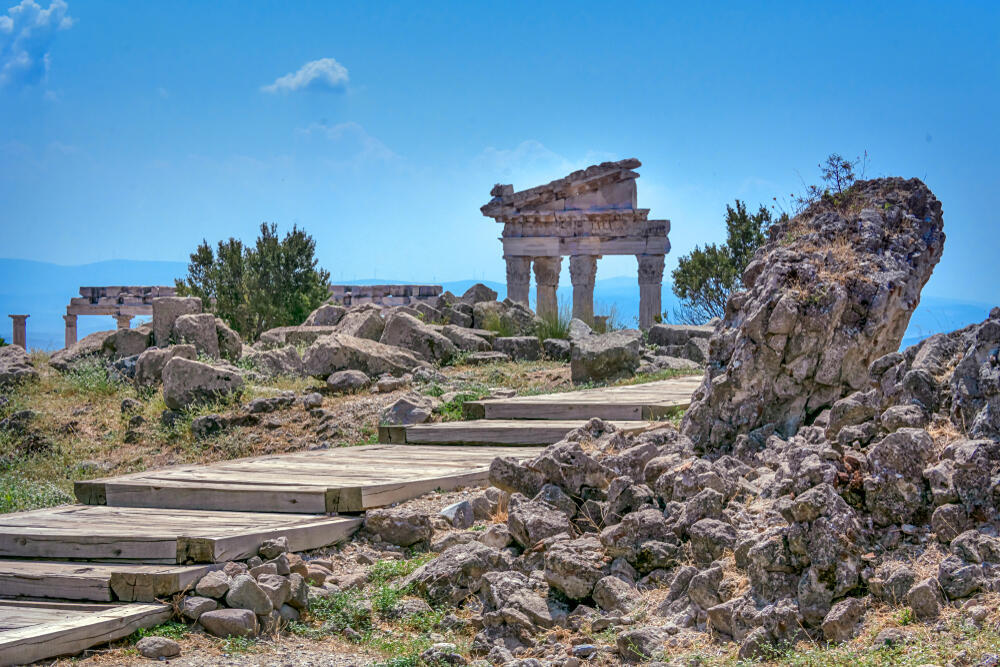Getting your Trinity Audio player ready...
Archaeological excavations in the ancient city of Pergamon — modern-day Bergama, Turkey — have uncovered a luxurious residential complex from the Roman period, featuring intricate mosaic floors and rare artifacts. The site, located near the Red Hall — a temple dedicated to Egyptian deities — dates back to the 3rd and 4th centuries AD and was excavated under the direction of researcher Yusuf Sezgin.
The most striking feature of the site is its mosaic floors, adorned with geometric and floral motifs. However, the discovery that most captivated researchers was a stone tombstone found inside a pool in the courtyard. The tombstone depicts a child and his dog hunting rabbits, accompanied by the inscription: "The sweetest child in the world." According to Sezgin, the research team believes the tombstone was placed by the boy’s grieving mother.
<< Get the Ynetnews app on your smartphone: Google Play: https://bit.ly/4eJ37pE | Apple App Store: https://bit.ly/3ZL7iNv >>
During the excavations, researchers also uncovered a tile bearing the word "basilica," meaning "belonging to the king" in ancient Greek. This finding suggests a possible connection between the residence and the Hellenistic royal family, as Pergamon once served as the capital of the kingdom. Sezgin explained that such stamps were typically used on buildings constructed specifically for the royal family within the city's acropolis.
Additional discoveries at the site included kitchen utensils, weapons, jewelry, and coins from the Roman and Byzantine periods. Nearby, researchers identified a Byzantine cemetery containing graves with human remains — evidence of the harsh living conditions during that time.
Based on their findings, the researchers believe the mosaic house was abandoned suddenly, likely due to a fire during the Arab raids in the 7th century.



